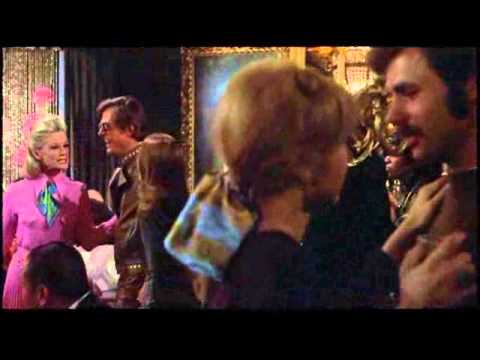When Bob & Carol & Ted & Alice premiered in 1969, it stunned audiences with its bold exploration of open relationships and modern marriage. This movie wasn’t just entertainment; it was a cultural phenomenon that captured the changing attitudes of the late ’60s. But beneath the surface of this iconic film lies a treasure trove of secrets and surprising mistakes that few noticed at the time.

Released during a period of intense societal change, Bob & Carol & Ted & Alice boldly dove into controversial topics like open relationships, challenging the norms of its time. The film’s satirical look at the complexities of love and fidelity made waves, sparking discussion and reflection among audiences. It wasn’t just a film—it was a reflection of the era’s quest to redefine relationships.
At the heart of this groundbreaking film was Natalie Wood, whose portrayal of Carol brought emotional depth to the story. Already a beloved Hollywood star, Wood’s performance became one of the standout elements of the film. Despite the opportunity for a major comeback, Bob & Carol & Ted & Alice marked the beginning of a five-year break from the big screen for the actress.
While the film’s boldness was well-received, it didn’t come without its challenges. On the very first day of shooting, director Paul Mazursky was paralyzed with fear, unsure how to proceed. Thanks to the guidance of the director of photography Charles Lang, Mazursky overcame his nervousness, leading to the creation of one of the most memorable films of the era.

The inspiration for Bob & Carol & Ted & Alice came from an article Mazursky read about Fritz Perls, a gestalt therapist who had a wild experience in a hot tub at the Esalen Institute in California. This eccentric moment sparked Mazursky’s curiosity, leading him to explore the themes of unconventional therapy and relationships. His visit to Esalen helped shape the script for the film.
One subtle detail about Natalie Wood that few knew at the time was her decision to wear a bracelet on her left wrist throughout the film. This was not a fashion choice, but a way to cover up a childhood injury. After breaking her wrist at the age of 10, Wood wore the bracelet to hide a slight deformity, keeping it as part of her public image.

Bob & Carol & Ted & Alice are packed with hidden cameos. One of the most surprising appearances comes from a young Leif Garrett, who made his cinematic debut in the film. Though he was only five years old at the time, Garrett would later become a pop culture icon. Fans of the film may also spot brief appearances by Bill Cosby and Paul Mazursky himself.
Throughout the film, Natalie Wood’s wardrobe became one of the defining aspects of her character. Designed by Moss Mabry, Wood’s clothing perfectly captured the free-spirited, bohemian vibe of the era. Her style was effortlessly chic, blending casual and polished looks. Mabry even designed a special bra, known as the “Natalie Wood bra,” which became a famous secret of its own.

Dyan Cannon also experienced a personal comeback in Bob & Carol & Ted & Alice. After a tumultuous divorce from Cary Grant, Cannon used this film as a stepping stone to revive her career. Her role as Alice Henderson marked a turning point, proving her resilience and determination to move forward after a difficult chapter in her life.
No film is without its mistakes, and Bob & Carol & Ted & Alice is no exception. From continuity errors like desserts magically reappearing to a record player being shown without a record, these goofs only add to the charm of the film. Fans of the movie can have fun spotting these moments while enjoying the timeless narrative.
One of the most iconic scenes in the film, where the characters are thrown onto a bed, was largely improvised. Director Paul Mazursky encouraged the actors to perform naturally, resulting in a raw and authentic scene. Robert Culp, playing Bob, was the only one who seemed at ease, while the others, including Natalie Wood, were initially unsure of what to do. This improvisation added to the film’s authenticity.
While Bob & Carol & Ted & Alice cemented itself as a cultural touchstone, it also marked a bittersweet moment in Natalie Wood’s career. After the film’s success, she chose to step away from acting for nearly five years, a decision that would define her later years. Sadly, this was her last major film role before her untimely death in 1981, leaving her legacy forever intertwined with the film’s groundbreaking themes.

